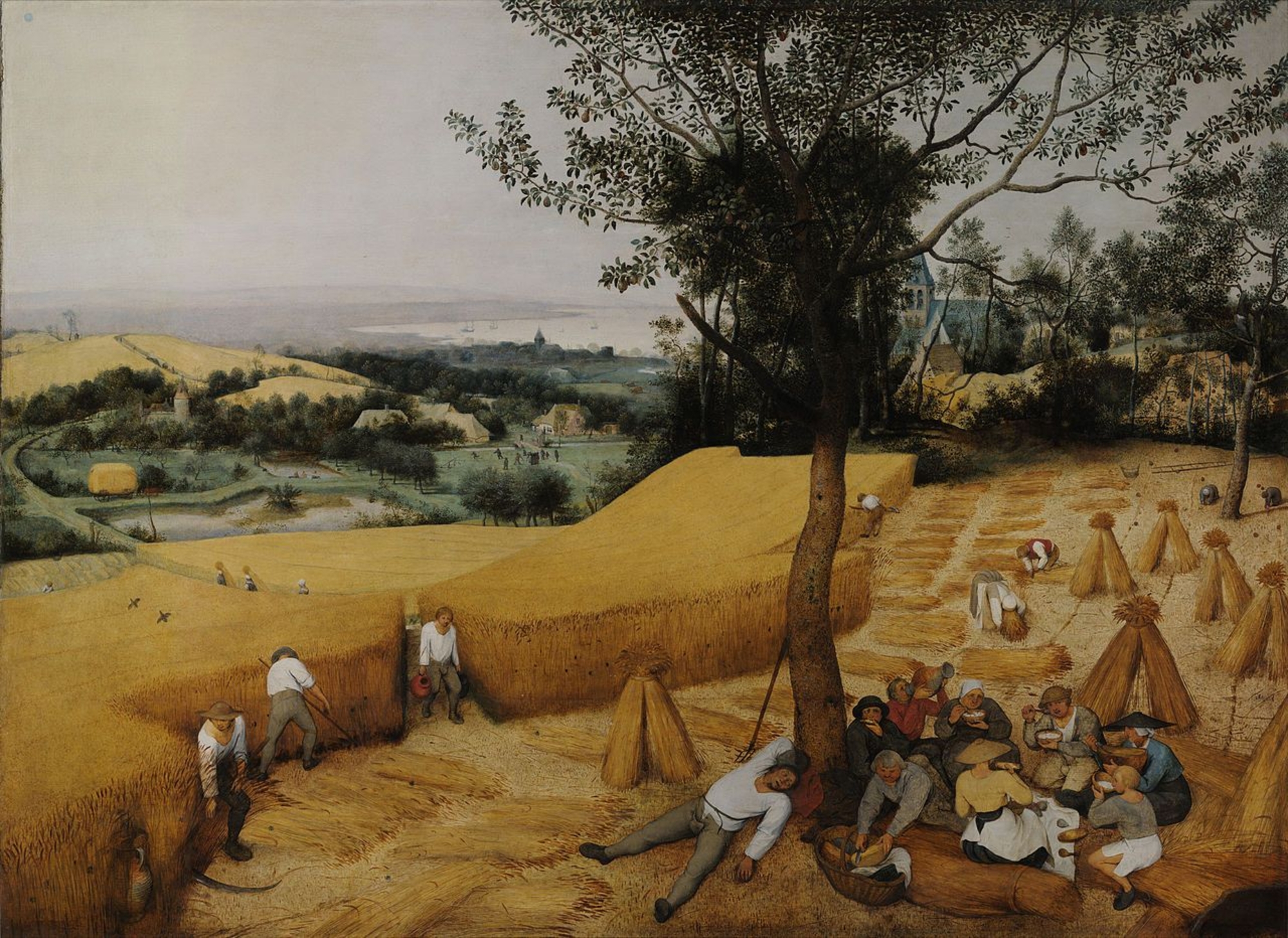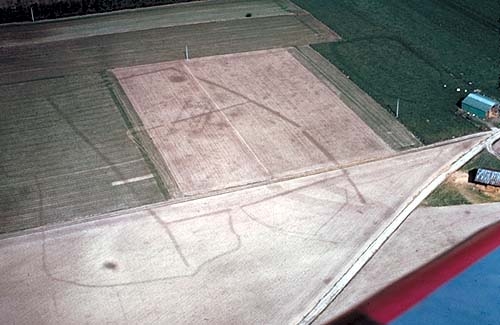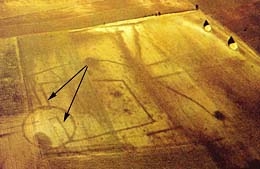- Home
- Discoveries
- Gallic settlements
- Types of vici
Large native farm with an internal partition and an curved, funnel-shaped entrance. Clearly, the site was reoccupied many times — one can make out a building whose floor plan is practically Romanesque. Condé-Folie (Somme).
In his Gallic Wars, Caesar mentions another type of habitation "vici". It does not seem that he is referring to groups of aedificia that are relatively close together, rare examples of which are found between Bettencourt-Rivière, Hallencourt, Abbeville and Bray-lès-Mareuil in the Somme. In Picardy, however, nothing has been spotted from the air that would make one think of vici, unless Gallo-Roman vici were built on top of older habitations, which is extremely hypothetical. Nevertheless, very recently vici have been revealed through excavations, like the remarkable one at Acy-Romance (Ardennes) led by B. Lambot (1998). He studied the spatial organization of this twenty-hectare enclosure — rigorously geometric and created from nothing — that included, among other things, large cultural buildings and pits containing human sacrifices. This is a habitation with no apparent boundary, while the cemeteries discovered nearby were placed within regular enclosures. But can we describe these "open habitations" as vici?
A beautiful example of a probably quite late-period native farm, with its entrance en touche de palmer. Note that it overlaps a large circular enclosure, which probably predates it. Neufmoulin (Somme).
Does this closely correspond with what Caesar describes? In any case, these open habitations without moated systems are quite difficult to spot from the air. When the observation conditions are excellent, all one can see are postholes, scattered pits, and silos. As for the vast "networks of enclosures", associated with postholes and pits, they indicate, in the majority of cases, the location of farms whose systems of nested enclosures appear to become increasingly regular over time. Nevertheless, all native farms certainly do not corresponds to what Caesar called aedificia. Only the more elaborate ones were such, the others being only tenant farms. Finally, and most importantly, aerial photographs — in the same way as recent excavations — indicate that one frequently sees a transformation of these large Gallic farms into Gallo-Roman villas. This can be seen not only in the permanence of the dwelling — such as Verneuil-en-Halatte (Oise) and Béhen (Somme), to name but two — but also in the relative continuity of the overall layouts, which are nearly identical to those of villas with stone foundations, like at Conchil-le-Temple. We must also point out that native farms existed side by side with Gallo-Roman villas for a very long time.


